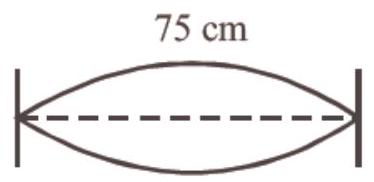Waves - Result Question 43
«««< HEAD:content/english/neet-pyq-chapterwise/physics/waves/waves-result-question-43.md
45. A string is stretched between two fixed points separated by $75.0 cm$. It is observed to have resonant frequencies of $420 Hz$ and $315 Hz$. There are no other resonant frequencies between these two. The lowest resonant frequency for this string is :
======= ####45. A string is stretched between two fixed points separated by $75.0 cm$. It is observed to have resonant frequencies of $420 Hz$ and $315 Hz$. There are no other resonant frequencies between these two. The lowest resonant frequency for this string is :
3e0f7ab6f6a50373c3f2dbda6ca2533482a77bed:content/english/neet-pyq-chapterwise/physics/waves/waves—result-question-43.md (a) $205 Hz$
(b) $10.5 Hz$
(c) $105 Hz$
(d) $155 Hz$
[2015 RS]
Show Answer
Answer:
Correct Answer: 45. (c)
Solution:
- (c) Resonant frequencies, for a string fixed at both ends, will be
$f_n=\frac{n \nu}{2 L}$ where, $n=1,2,3 \ldots$.
The difference between two consecutive resonant frequency is,
$ A _{f n}=f _{n+1}-f_n \Rightarrow \frac{(n+1) v}{2 L}-\frac{n v}{2 L}=\frac{v}{2 L} $
which is also the lowest resonant frequency ( $n=1$ ).
Thus, for the given string the lowest resonant frequency will be
$=420 Hz-315 Hz$
$=105 Hz$

The difference between any two successive frequencies will be ’ $n$ '
According to question, $n=420-315=105 Hz$ So the lowest frequency of the string is $105 Hz$.
In a stretched string all multiples of frequencies can be obtained i.e., if fundamental frequency is $n$ then higher frequencies will be $2 n, 3 n, 4 n$…










